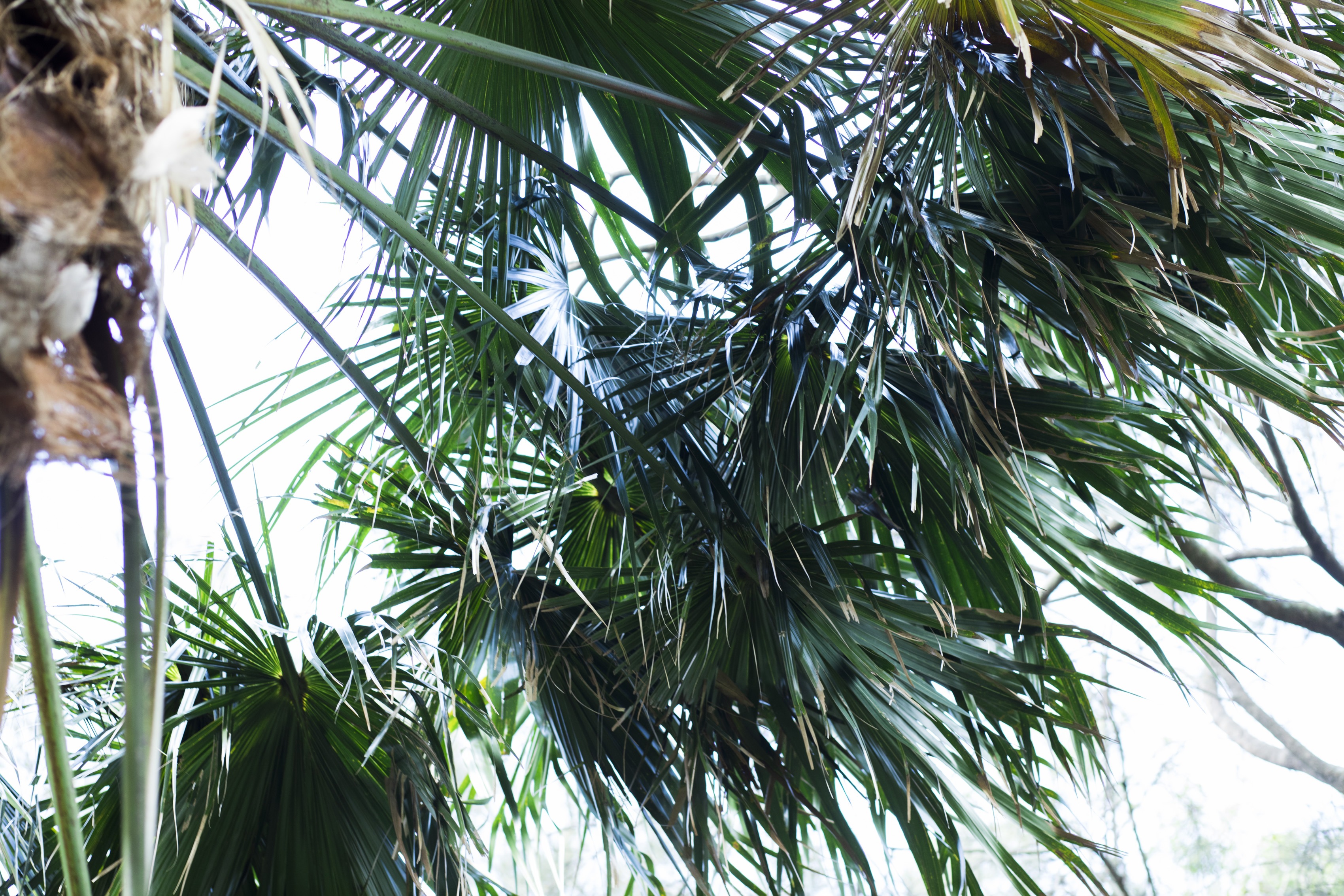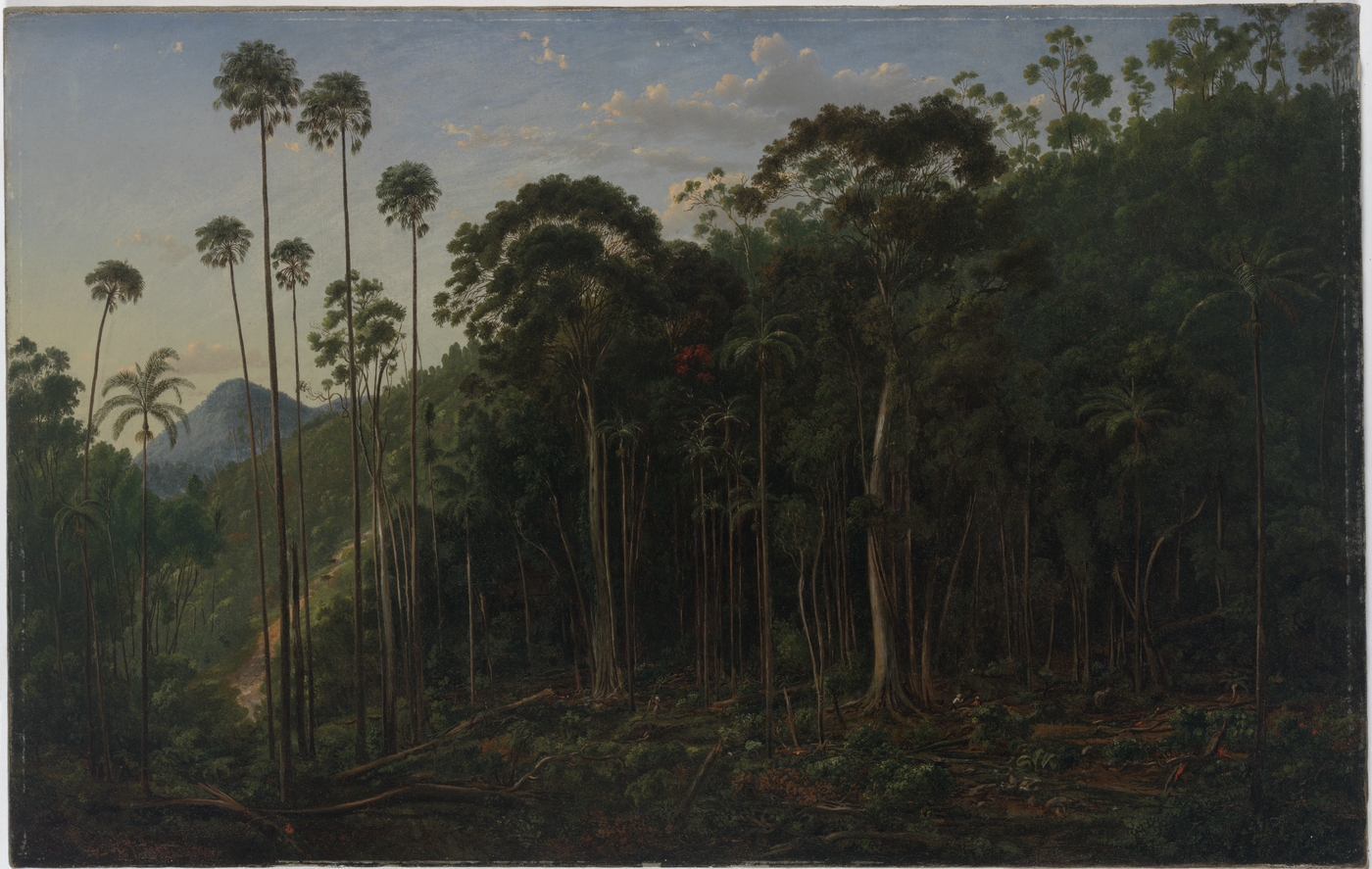Seeing without understanding
Student activities
Task no. 1
Cabbage tree palm activity – paper sculpture
Research the cabbage tree palm. Answer the following:
- What are its uses?
- Where and how does it grow?
- What conditions are necessary for it to flourish?
View the contemporary photographs of the cabbage tree palms, below.


Examine the structure of the cabbage tree palm closely.
Construct a miniature version of one of the leaves. (The real size of a leaf, as you will find out, is metres wide!) Use sturdy recycled cardboard (for example, from cereal boxes) and add concertina folds. Join multiple sections of concertina-folded leaves together with PVA glue to create a more fully shaped leaf. Instructions are available in the downloadable resource.
Research how the Gweagal people used the cabbage tree palm, and its significance to them, by listening to Dr Shayne Williams, from the exhibition, Eight Days in Kamay, here. You can also find out a little more about the cabbage tree palm by reading this page from National Parks and Wildlife’s website, here. Make sure you take notes on what you have learnt from both of these sources.
Write your findings about the cabbage tree palm with a thick felt-tip pen on the long sections of each side of the sculpted leaves you have created. Make as many as you need to add all your research and create a display. You might like to add a trunk to complete your own cabbage tree palm.
Create a rap about the cabbage tree palm to record with a video of your leaf display.
Task no. 2
Cabbage tree hats
The Gweagal people carefully cultivated the cabbage tree palm and made use of many parts. Aboriginal people used parts of this tree for food, medicine and shelter. Even the fibres were used to make string, rope and fishing line. In the nineteenth century Europeans also found a use for the fibres of cabbage tree palm, making them into hats to protect themselves from the harsh sun!
Look at the painting by Eugene Von Guerard, in the collections of the Library, of bushland near the Shoalhaven River below. Can you see the tall cabbage tree palms?
Hats made from cabbage tree became quite popular in the colony of New South Wales in the 1800s. You can see an example of one of these cabbage tree hats in the collections of the Museum of Applied Arts and Sciences (the Powerhouse Museum), by clicking here.
Take a close look at the drawing showing the hustle and bustle of everyday life on George Street in Sydney, painted in 1842, below. Zoom in. Can you see any hats which might be made from cabbage tree?
Research the history of the cabbage tree hat and answer the following questions:
- Which group of citizens began the manufacture of cabbage tree hats?
- Why didn’t the industry last beyond the nineteenth century?
- Who wore cabbage tree hats?
- Who were the cabbage tree mobs and how would you describe them?
Find an image of someone wearing a cabbage tree hat.
Answer the following question:
- How do these hats provide protection from the weather?
Make a list of what is appropriate and what is inappropriate to wear on an Australian summer day.
Did you know this learning activity was just one in a series? To find more, click here.



